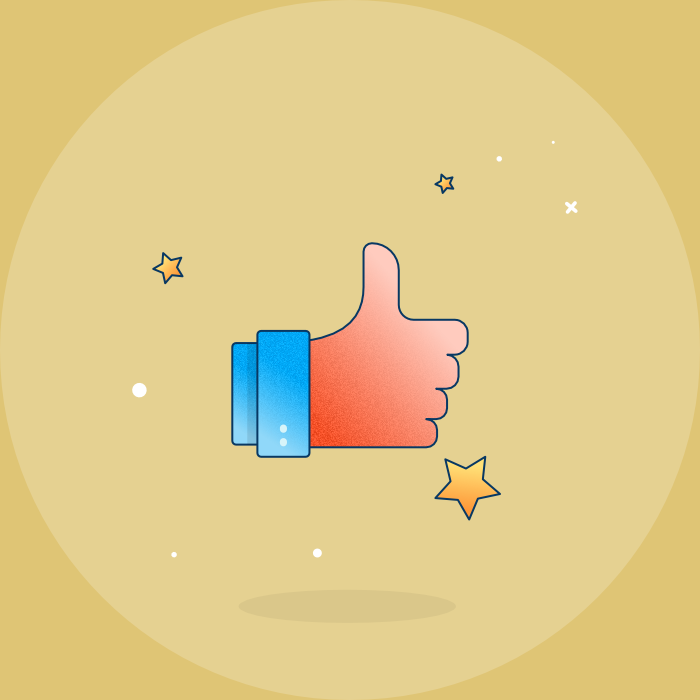The following is adapted from Getting to Aha!
Every product has a lifecycle. It starts with innovation. Once the innovation is introduced into the marketplace, competitors see an opportunity and flock to it. They create new, enhanced versions without altering the innovation’s core, growing its market-wide customer base.
In time, however, the product’s novelty wears off. The product enters a phase of maturity. Ultimately, it declines. At that point, many brands stagnate and may never recover. Some die out completely.
But this doesn’t have to be the case. By understanding the stages of the natural brand lifecycle, you can better prepare for the inevitable decline. You can get ready to innovate, restarting the cycle anew, so you can remain relevant to your fan base over the long term.
Stage #1: Innovation
The first stage of the brand lifecycle is innovation. Every new brand needs some kind of innovation to distinguish it from competitors and establish a foothold in the market. The innovation could be a product feature, better customer service, cheaper cost, or any number of differentiations.
A great example of the brand lifecycle in action is the razor market. In 2012, Gillette (owned by Procter & Gamble since 2005) dominated the US razor market, claiming a share of 72 percent. Then, 34-year-old Michael Dubin entered the men’s shaving scene.
Dubin was frustrated by the cumbersome and costly razor-buying process that involved finding a clerk to unlock the “razor fortress” for the privilege of paying too much for too few razors. He was also convinced that if he could mail blades to customers for less than they’d pay in the store, they’d sign on for a subscription service.
When a family friend asked Dubin if he was willing to unload a warehouse full of surplus blades, Dubin accepted the challenge. In March 2012, he launched Dollar Shave Club with a $4,500 YouTube video. In it, Dubin proclaimed his company’s blades were great, and the video went viral. Dubin received 12,000 orders that day.
Through the innovation of rethinking how razors were sold—and their cost—the Dollar Shave Club was born, and the brand life cycle began.
Stage #2: Growth
After innovation comes growth. As customers become aware of the innovation, the brand’s customer base and market share grow. Additionally, other companies will begin to copy the idea, further saturating the market.
That’s exactly what happened with the Dollar Shave Club. More and more customers flocked to the company, excited by the lower cost and the convenience of a subscription. By 2015, the company’s sales had risen to $263 million.
Competitors such as Harry’s and ShaveMOB popped up, and Amazon launched a service of its own. So did Gillette. The “Gillette Shave Club” resorted to tweeting claims such as “two million guys and counting no longer buy from the other shave clubs.” But in 2016, Dollar Shave Club claimed 51 percent of the online razor market, while Gillette controlled just over 21 percent of it.
The growth phase feels incredible as a brand. It can seem like the good times will never end, but the growth phase only lasts as long as the innovation feels new and special.
Stage #3: Maturity
After growth comes maturity. At this point, the novelty is gone. The brand has established itself and grown as much as it can off the initial innovation. Companies can struggle to remain realistic and prepare for the eventual fall when their product is sitting atop hype mountain. But it’s critical to prepare for the inevitable.
In 2016, Unilever purchased Dollar Shave Club for $1 billion, and at that point, the privately held Dollar Shave Club was on track to generate $250 million in annual revenues. We’ll call this the point of maturity, as around this time Dollar Shave Club’s US sales began to flatline.
To get a peek of what might happen to Dollar Shave Club in the future, let’s turn our attention to Gillette. Just like Dollar Shave Club, Gillette once innovated. They increased the number of blades and added features such as vibrating handles, moisturizing strips, and flashlights. While such innovations helped Gillette reach maturity and gain market share, they also made the razors more and more expensive. Soon, the “innovations” became superficial and no longer provided true value for customers.
It’s easy for brands to get comfortable when they reach maturity. With 72 percent of the market share, Gillette probably felt pretty confident. If you’re like Gillette, though, and things are going well—perhaps too well—it’s important to recognize that extremes are unsustainable. Sooner or later, something you can neither predict nor control will cause the pendulum to swing the other direction.
Stage #4: Decline
The fourth stage is decline. From the peak of maturity, the only direction for brands to go is down. As others continue to innovate and grow, mature brands begin to decline, losing customers and market share.
We saw this happen with Gillette. By the time Unilever acquired Dollar Shave Time, Gillette’s total market share had fallen from a high of 72 percent to just 54 percent. Unless Dollar Shave Club continues to innovate, we may well see this happen with them too.
Brands can struggle with the downside when their product or service is entering the phase of declining popularity. But decline isn’t necessarily the final stage of a brand. By innovating once more, the brand can restart the entire lifecycle, and an upswing will take hold again. Brands that stick around for the long haul position themselves to seize on the cycle’s opportunities and weather its busts.
The best way to minimize and weather decline is to prepare for innovation. You can do this through conversations: conversations with your customers, your employees, and even other industry leaders. Seek out advocates for consumers who will play the role of devil’s advocate for you. Find people who will tell you that endlessly adding more blades and minor features are not “innovations” that produce a better experience.
Ideally, you will innovate quickly, before too much decline occurs, but it’s better late than never. In June 2017, no doubt in response to their declining market share, Gillette announced they would be slashing prices of its razors by as much as 20 percent. If they continue to listen to their customers like this, they could very well innovate and spark a new period of growth that helps them regain their market share.
While decline is likely not your preferred stage, this last phase can clear the way for reinvigorated interest and reinvention, and for the lifecycle to begin again.
An Endless Cycle
The brand lifecycle is inevitable and continuous. Don’t be surprised by the unavoidable, and don’t let the extremes of success or struggle engulf you.
Just as the universe strives for balance, so should you. You can’t predict the future, but you can recognize when you are out of balance. When you start swinging in one direction, take notice and avoid going too far. Know you’re vulnerable when you hit a peak, and trust that opportunities to harness the energy of a new cycle can abound when you’re in a valley.
Remember that your competitors are always waiting in the wings, looking for ways to disrupt even the biggest industries and the most entrenched players. To stay ahead of them, you have to keep striving to come up with ways to deliver better experiences for your audience. Embrace the endless brand lifecycle, and keep innovating.
For more advice on the brand lifecycle and innovation, you can find Getting to Aha! on Amazon.
Subscribe to weekly updates
You’ll also receive some of our best posts today






